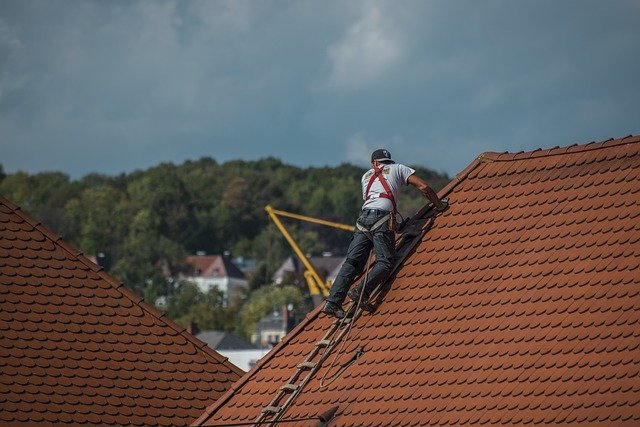Roof Repair 2025: Techniques, Recovery, and Homeowner Guide
Roof repair and maintenance are pivotal in maintaining property safety and value. With advanced roofing materials and technologies available in 2025, homeowners can manage emergencies, extend roof lifespan, and prevent damage. Learn about essential repair techniques, the significance of regular upkeep, and the latest advancements in sustainable roofing options, ensuring resilience and efficiency for homes.

Roofing systems are the first line of defense against environmental elements, yet they remain one of the most neglected aspects of home maintenance until problems become evident. As construction materials advance and climate patterns shift, roof repair strategies must adapt accordingly. The approaching year brings innovative approaches to addressing common roofing issues, from minor leaks to major structural concerns, with techniques that emphasize longevity, sustainability, and cost-effectiveness.
Essential Roof Repair Techniques for 2025
The roofing industry continues to evolve with techniques that balance traditional craftsmanship with modern technology. Spot repairs have become more sophisticated, with injectable sealants that can penetrate deeper into roofing materials and create longer-lasting barriers against moisture. For shingle roofs, partial replacement methods now allow contractors to seamlessly integrate new materials with existing ones, reducing waste and expense.
Infrared moisture detection has revolutionized the diagnostic process, allowing professionals to identify water infiltration before visible damage occurs. This technology enables precise repairs that address the root cause rather than just symptoms. Additionally, drone-based inspection systems provide comprehensive aerial assessments without risking worker safety, documenting roof conditions with high-resolution imagery that can detect even minor defects.
Advanced flashing repair techniques now incorporate flexible, self-adhering membranes that create more reliable seals around roof penetrations and valleys. These materials expand and contract with temperature fluctuations, maintaining their integrity in extreme weather conditions far better than traditional flashing methods.
The Importance of Regular Maintenance
Preventive maintenance has evolved from a recommendation to a necessity for homeowners serious about protecting their investment. Regular inspection schedules should now account for seasonal changes and follow severe weather events, with particular attention to areas prone to debris accumulation and water pooling.
Gutter systems require more sophisticated maintenance as rainfall patterns intensify in many regions. Advanced gutter guards and downspout filters now incorporate antimicrobial properties to prevent biological growth while allowing water to flow freely. Professional maintenance services increasingly offer comprehensive care packages that include debris removal, moss treatment, and minor repairs on a scheduled basis.
Roof coating technologies have advanced significantly, with reflective and protective coatings that can extend roof life by up to 25%. These coatings provide UV protection, improve energy efficiency, and create additional waterproofing barriers. Maintenance plans that incorporate these treatments at strategic intervals can substantially reduce the lifetime cost of roof ownership.
Handling Emergency Roof Leaks
When water begins penetrating your home, immediate action becomes critical. Emergency response protocols have become more systematic, beginning with proper interior water containment to minimize secondary damage while preparing for repairs. Temporary patching materials have improved dramatically, with quick-setting compounds that can create watertight seals even in damp conditions.
Water detection systems now integrate with smart home technology, alerting homeowners to potential leaks before visible damage occurs. These early warning systems can detect moisture in attic spaces or between roofing layers, providing crucial time to address issues before they become emergencies.
Emergency repair services have also evolved, with many contractors now offering virtual assessment options that allow them to provide guidance remotely while preparing for on-site repairs. This approach helps homeowners take appropriate first steps while professional help is en route, potentially saving thousands in water damage costs.
Recovery and Preventive Strategies
After addressing immediate roof damage, recovery strategies should focus on comprehensive assessment and long-term solutions. Post-repair inspections now commonly include thermal imaging to verify that all moisture issues have been resolved, particularly in insulation and structural components that may not show visible signs of water damage.
Preventive strategies increasingly incorporate climate-specific considerations, with roofing systems designed to withstand the particular challenges of a home’s location. In areas prone to high winds, enhanced fastening systems and impact-resistant materials have become standard recommendations. For regions with heavy snowfall, heating elements and improved structural support address snow load concerns.
Documentation has become an essential component of roof recovery, with detailed records of repairs, materials used, and warranty information forming the foundation of ongoing maintenance plans. Digital documentation systems allow homeowners to track their roof’s history and anticipate future maintenance needs based on material lifespans and repair patterns.
Cost Considerations for Roof Repairs in 2025
Roof repair costs continue to reflect both material advances and labor market realities. Minor repairs like replacing a few shingles or patching small leaks typically range from $150 to $400, while more extensive repairs involving structural components can range from $1,000 to $3,000 depending on accessibility and complexity.
| Repair Type | Average Cost Range | Typical Lifespan of Repair |
|---|---|---|
| Shingle Replacement | $150-$700 | 15-30 years |
| Flat Roof Repair | $300-$1,500 | 10-20 years |
| Flashing Repair | $200-$500 | 15-20 years |
| Chimney Flashing | $300-$1,500 | 10-15 years |
| Roof Vent Replacement | $175-$500 | 10-20 years |
| Complete Roof Recovery | $7,000-$12,000 | 20-30 years |
Prices, rates, or cost estimates mentioned in this article are based on the latest available information but may change over time. Independent research is advised before making financial decisions.
Emergency repairs typically command premium pricing, with after-hours service calls adding 25-50% to standard rates. Homeowners can mitigate these costs through maintenance contracts that include priority service agreements and scheduled inspections that catch problems early.
Insurance coverage for roof repairs has become more complex, with many policies now distinguishing between damage types and age-related deterioration. Documenting roof condition and maintenance history has become essential for successful claims, particularly in regions prone to severe weather events.
Selecting Qualified Roof Repair Professionals
The roofing industry has seen significant professionalization, with certification programs and specialized training becoming more important differentiators among contractors. When evaluating potential repair professionals, homeowners should verify credentials specific to the roofing materials on their homes, as techniques and requirements vary widely between metal, tile, asphalt, and other roofing systems.
Digital verification tools now make it easier to confirm licensing, insurance coverage, and warranty programs. Many reputable contractors offer digital documentation of all work performed, including before-and-after images and material specifications that can be valuable for future maintenance or insurance claims.
Communication capabilities have become an important consideration, with the most effective repair professionals offering clear project timelines, transparent pricing structures, and regular updates throughout the repair process. These communication practices help prevent misunderstandings and ensure that repairs meet homeowner expectations and industry standards.
As we look toward 2025, roof repair continues to advance through improved materials, diagnostic technologies, and installation techniques. Homeowners who understand these developments can make informed decisions about maintaining their roofing systems, potentially extending their lifespan while reducing overall costs through timely intervention and appropriate preventive measures.




